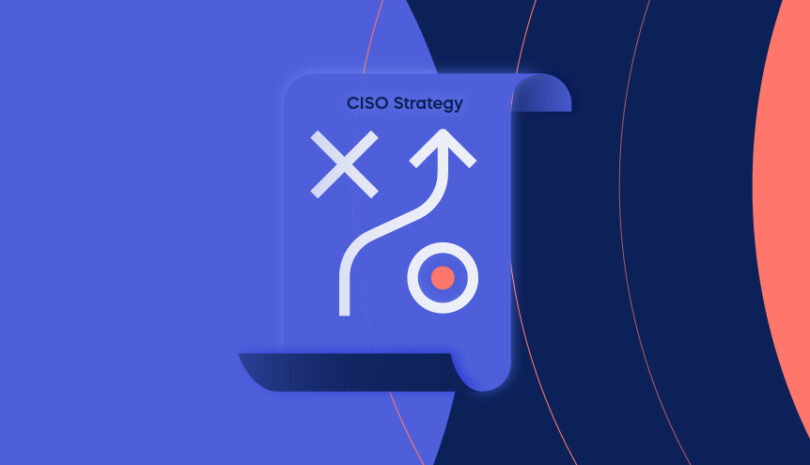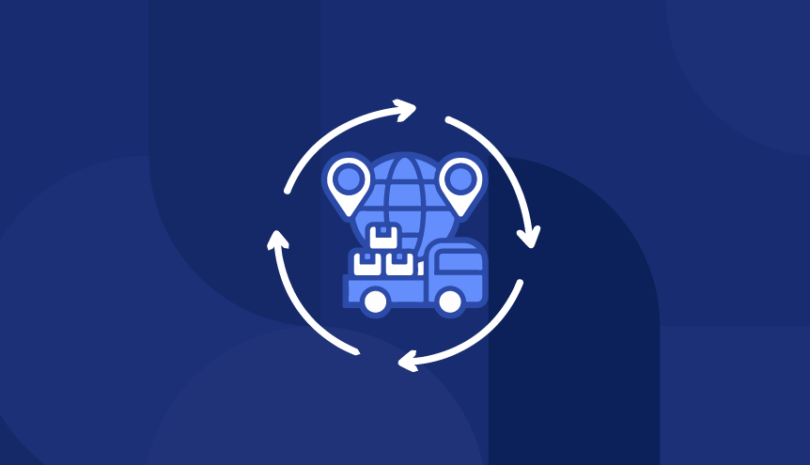In 2011, an underwater earthquake of 9.0 magnitude struck Japan – one of the strongest earthquakes ever recorded. The earthquake and accompanying tsunami that left more than 28,000 people dead or missing was also felt far beyond the borders of the island nation as it severely impacted the global supply chain. Major global semiconductor manufacturers in the region were disrupted, as was the NAND Flash Market. At the time, Japan was responsible for 40% of the global production of the NAND Flash market, a key component for the Apple iPad. As fate would have it, Apple had released the iPad2 on the same day as the earthquake, pushing the delivery time off of those who ordered by 4-5 weeks.
Although this example is extreme, it illustrates how our global supply chains are precarious in an interconnected global economy and why supply chain management is paramount.
While these disruptions can’t be prevented, one method to mitigate these disruptions is for organizations across all industries to embrace supply chain digital transformation.
What is a Digital Supply Chain?
A digital supply chain is all of the software organizations today that help an organization run its business. For example, a modern bank now has many third-party software components that are essential to its operations. A credit rating service evaluates the credit of new customers; payment services and credit card companies help customers receive and transfer payment; and auditing and accounting firms facilitate regulatory compliance and ensure the financial well-being of the company.
Even more traditional supply chains in industries such as manufacturing now have advanced technologies applied to them that automate, gather, and analyze data to help increase efficiency in operations and logistics, and even define business objectives. These digital supply chains now must safeguard the security of these systems.
Why is a Digital Supply Chain Important?
According to IBM, 53% of Chief Supply Chain Officers (CSCOs) believe that having a digital supply chain in place in the next three years will offer a significant competitive advantage.
Other benefits include:
- Increased flexibility. When organizations receive data about their supply chain in real time, it allows them to take a step back and concentrate on key aspects of their business. Supply chain leaders can use the data to reevaluate their current business models, eliminating products that don’t meet customer demand and adding additional products that do.
- Greater visibility. IoT device monitoring gathers data about every aspect of your supply chain. They can apply the insights from that data to specific aspects of the supply chain such as improving maintenance, supply chain planning, optimizing operational technology to control costs and improving supplier performance. All of these help your organization to develop a more effective digital supply chain.
- Operational efficiency. For example, machines facilitate heavy lifting in warehouse automation, promoting greater safety for workers who in the past may have risked injury by overextending themselves physically during long shifts. Another advantage of the digital supply chain is that the increased access to data enables greater collaboration between cross-functional teams. For example, data on the performance and maintenance of machines from the quality assurance team can be shared with the product and marketing team to fine-tune their marketing and business objectives.
- Greater customer satisfaction. Advanced analytics enables organizations to develop deep insights into every aspect of the customer experience. In a highly competitive market, the ability to offer customers a highly personalized customer experience helps organizations set their brand apart.
- Increased resilience. These new technologies allow organizations to automatically identify risks, enabling them to better manage these risks so they either eliminate or minimize disruptions. This is especially important in today’s supply chain network, where third parties have the potential to greatly increase security risks to organizations.
What is the Difference Between Supply Chains and Digital Supply Chains?
Traditional supply chains include the entire manufacturing process, from sourcing the supplier to designing and manufacturing the product to delivery to customers. For example, manufacturers are responsible for sourcing raw materials through either a supplier or a distributor and this task is often subcontracted to a third party. Since each step is linear and dependent on the previous step performing correctly, it can take days or weeks to realize that one of these processes is delayed or not functioning, resulting in missed deadlines and unhappy customers.
In contrast to the traditional supply chain, the process is non-linear, functioning more like a network, and adaptive. For example, in a traditional supply chain, a clothing retailer would have to call to check whether or not a specific men’s shirt and color is available with a supplier. A digital supply chain, however, can digitize and automate the process through sensors and monitors to detect not only if the men’s shirt is available, but which color and size – in real time.
Organizations that adopt a digital supply chain are more responsive and better able to mitigate risk. Digital supply chains also rely on advanced digital technologies that mine and analyze data so that organizations can use it to meet their business objectives.
These new technologies include automation, advanced analytics, predictive analytics and digitization. One specific advanced technology is digital twin learning, a virtual model that allows an organization to make a digital copy of its supply chain process. Using a digital twin combined with machine learning and predictive forecasting, organizations can prepare in advance for different scenarios that affect their supply chain, and prepare accordingly.
What are the Most Common Risks to the Digital Supply Chain?
Vendor risk should be evaluated comprehensively, looking at risk as a whole rather than seeing each as a purely individual risk. Third-party risk professionals should also consider the cascading effect each individual risk has on the other types of risk.
Risks include:
1) Increased financial investment
Moving from a traditional supply chain to a digital one requires substantial investment in digital technology and organizational resources. This may include new technology specialists as well as training current employees on how to use the new technology. It can also divest time and energy from the organization as supply chain leaders, executives, business leaders, and manufacturers may have difficulty agreeing on the type of data and technology they want and need to put in place.
2) Third-party security risks
One of the most common threats to organizations today is supply chain attacks, such as the recent SolarWinds and MOVEit attacks. The SolarWinds attack that ran malware on the Orion network product updates impacted over 18,000 customers, including high-profile governmental organizations such as the Department of State, Homeland Security and the U.S. Treasury. The MOVEit attack resulting from an exploited vulnerability from the payroll supplier Zellis impacted major brands such as the BBC, British Airways and Boots, a UK pharmacy chain.
3) Inability to meet compliance
When data is transferred among many vendors and parties, there is a risk of non-compliance, especially for organizations in heavily regulated industries. When organizations fail to meet compliance, they not only pose a risk to their organization but to every other organization in their extended digital supply chain.
4) Geopolitical instability
Political conflicts, economic sanctions and trade disputes can disrupt suppliers or half their operations altogether. For example, the Ukrainian-Russian conflict has severely disrupted the supply chain of grain, oil and minerals across the globe, contributing to rising inflation.
How Panorays Helps the Management of the Digital Supply Chain Risk
According to a recent survey by Deloitte, 77% of executive of global organizations confirmed that they experienced disruptions to their supply chain last year; another 44% expect additional disruptions in the next two years. The global pandemic, geopolitical conflicts, rising inflation and third-party cybersecurity threats have all contributed to global supply chain disruptions that have repeatedly made the headlines in many mainstream media outlets.
Panorays’ third-party assessments give you an extended view of your digital supply chain, making it easier to assemble SBOMs and align compliance of your organization with your third parties. Its automated and customized questionnaires also allow you to assess and manage cyber risk by identifying suppliers, including shadow IT to map out the relationships between your organization and third, fourth, and n-th party suppliers.
Want to learn more about how Panorays can help you gain complete visibility of your digital supply chain? Sign up for a free demo today or contact us to learn more.
FAQs
An example of a digital supply chain is all of the different software and services that make up an e-commerce company. This includes but is not limited to the web host, the CMS provider, cloud services, an e-commerce platform, and any additional digital technology it uses to promote its products such as Amazon Web Marketplace.
A digital supply chain is all of the software applications that facilitate the operations of a business. That might include their marketing and sales software, web applications, any outsourced code (either open source or commercial) or code from their development team, and payroll suppliers and accounting platforms.
Greater flexibility. The ability to gain insights in real time allows senior management to quickly pivot business strategies if necessary.
Higher visibility. For example, end-to-end transparency enables you to see exactly where in the supply chain you need to focus to optimize operations, improve maintenance, or switch suppliers altogether.
Better operational efficiency. Since the data on every aspect of the supply chain is visible, it can motivate teams to collaborate together more closely.
Increase customer satisfaction. When customers regularly benefit from highly personalized experiences, it can set your brand apart.
Greater resilience. In the event of an attack or incident that halves or disrupts the supply chain, the organization and employees will be better equipped to react and find alternate methods for continuing business operations.






